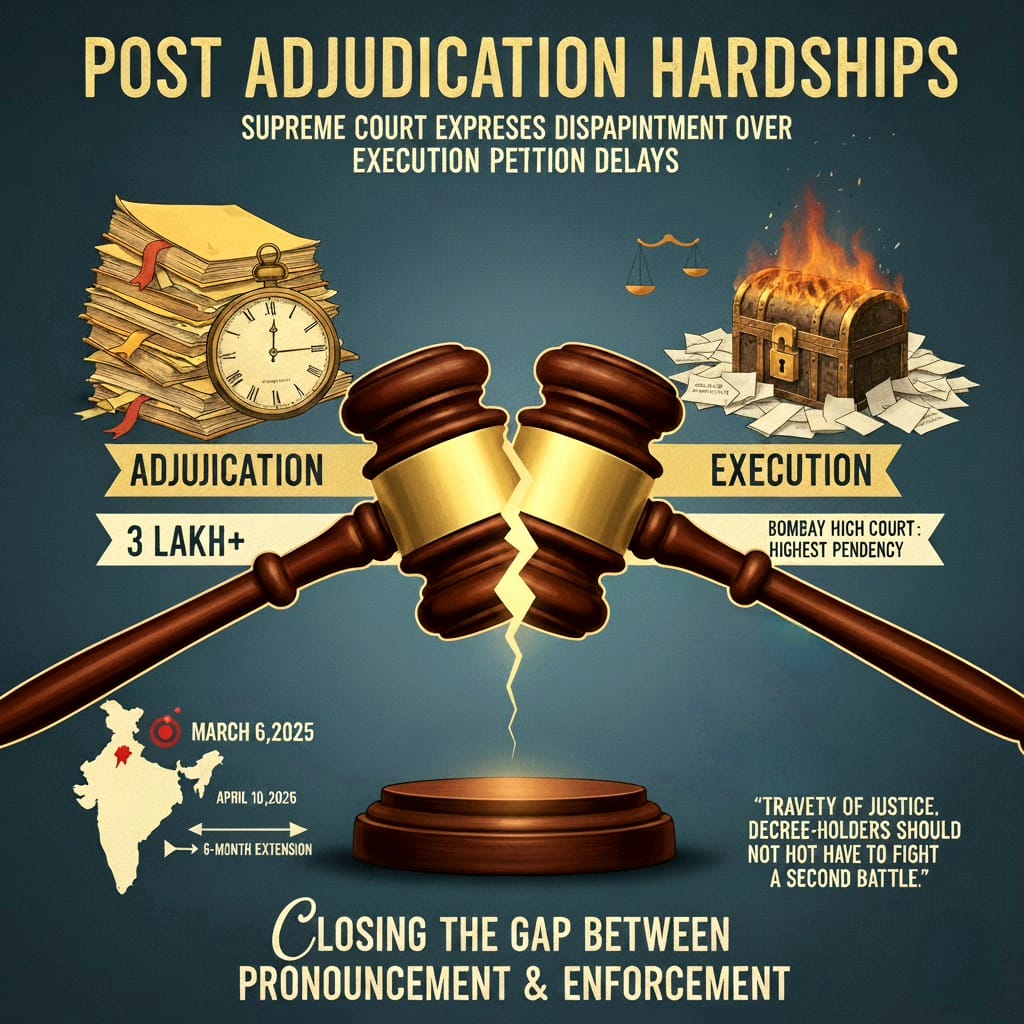When the Supreme Court sought the justification for the enforcement of execution petitions in its order in the case of Periyammal (Dead) Through LRs & Ors v. V. Rajamani & Anr., which set a 6-month limit to dispose of execution petitions. Upon receival of the data from the High Courts around the nation in regards to the pendency of execution petition older than 6 – months, the court was high disappointed with the numbers. The Bombay High Court has the most execution pendency cases with more than 3 lakh cases. There are around more than 8 lakh cases pending before all the high courts. This crisis of timely execution of judicial decrees has been severely highlighted by the SC, directing urgent remedial measures, exploring gaps between adjudication and enforcement.
Execution petitions are the petitions filed by the decree holder in the civil court seeking the enforcement of the civil court orders mainly regarding the orders of recovery of money, possession of property, or specific performance. The unnerving pending of cases during the Court’s monitoring of compliance with its order dated March 6th 2025, where all the High Courts were to gather data from their respective district judiciaries and issue directives for disposing execution petitions within the time span of 6 months. The genesis of this objective lies in the intention to address the widespread delays in execution petitions which runs upto three to four years, undermining the agenda of obtaining decree and eroding public trust in the judicial system.
The SC specially expressed its displeasure with the Karnataka High Court for not abiding with the directions of SC i.e. the failure to provide the concerned data. Resulting in the demand for explanation and immediate submission for the absent statistics from the Registrar of the Karnataka High Court.
The Court observed that:
“If it is going to take years and years to execute the decree, then it makes no sense and would be nothing short of travesty of justice. Decree-holders should not have to fight a second battle merely to realize the fruits of a judgment already in their favour.”
The SC reiterated that the non compliance to the orders and directives by any Presiding Officer would attract his accountability to the respective High court of the jurisdiction on the administrative side. Moreover to address the given situation the court has granted a 6 month extension to the High Court to ensure that the pendent execution petitions are disposed of, and to “evolve procedure and guide the respective district judiciaries”. The next review is scheduled on April 10th 2026, requiring comprehensive reports from all hHigh Courts on district as well as original sides.
Conclusion
The SC has attempted to address one of the most prominent challenges of the Indian Judiciary i.e. to reduce the gap between Adjudication and Execution. Persistent delays not only in the enforceability of judicial decisions are awarded but also turn the outcome into “a travesty of justice”. The cognizance of the apex court into this aspect keeps the light of hope alive that the necessity of structural and administrative reforms in the institution will ensure justice is not just pronounced but also enforced without illegitimate delay. This order is a bookmark that states the concern of enormous judicial backlog in execution matters and also to be the catalyst for systemic overhaul aiming to fill the gap between pronouncement and enforcement.

